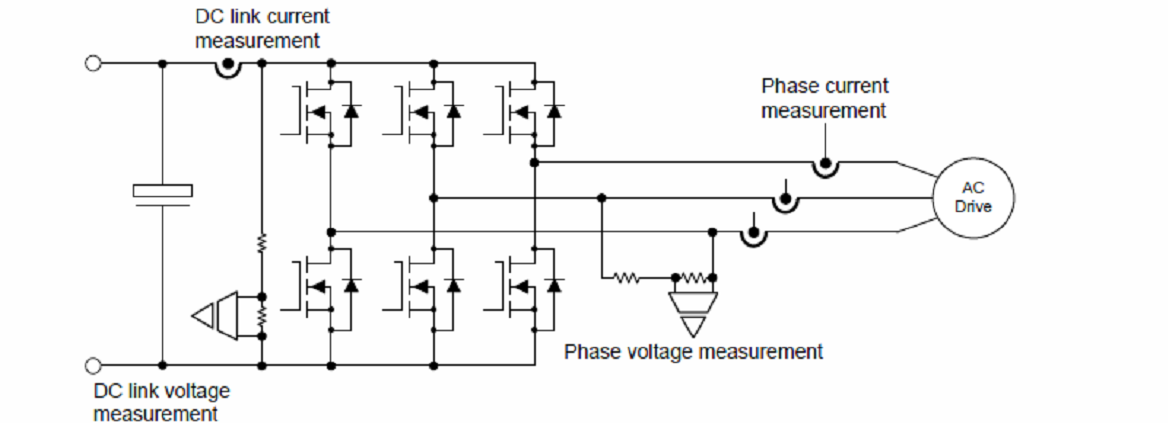This post sponsored by Texas Instruments.
As designs become more demanding, completing tasks the same way but making a product shinier just doesn’t cut it anymore. If you don’t find a way of improving and refining your product while keeping costs as low or lower than the competition, then even the most loyal customers will find their way to the other guys.
Perhaps nowhere is this more evident than with machines using motors. Every designer is struggling to achieve higher accuracies, faster speeds, lower power, less vibration and noise, better torque, and longer lives out of their designs. A factory robot or 3-D printer that can only assemble five units per hour competing with a robot that can finish seven is at a distinct disadvantage.
This means designs have to sense and respond faster than ever before. A change in load or an impulse force affecting the motor must be sensed and dealt with as soon as possible to avoid the cascaded effects that introduce errors and faults, or damage tool heads.
Fortunately, the quality of building blocks is also improving at a steady rate, making the latest techniques and parts available to us at an accelerated pace. More highly integrated ICs perform sub-system levels of functionality autonomously. Data acquisition and filtration provide clean data streams for algorithms to chew on.
Designing and developing a test platform can be as time- and cost-consuming as generating the actual design. It is here where parts manufacturers shine, showcasing the parts and the development systems in place that demonstrate how they work. As a case in point, consider Texas Instruments’ TIDA-00171 motor control development reference design and kit.
This free reference design focuses on the key parameter needed for precise and adaptive motor control – the current in each of the phase windings. The schematics demonstrate how as many as three phase motors can feed an isolated and filtered measurement system that uses shunt techniques to accurately measure the currents and voltages through the AMC130x reinforced isolated delta-sigma modulator (Figures 1a and 1b).


Figures 1a and 1b: DC link voltage and current, as well as phase voltage and current, for each phase are tapped into (top, 1a) and fed into a delta-sigma modulator (bottom, 1b) that generates an isolated data stream to the DSP. (Source: Texas Instruments)
The modulator uses double-capacitive isolation techniques to achieve up to 78,000 samples per second at a 16-bit resolution when coupled with a good DSP processor like the TMS320F2837 Delfino dual-core microcontroller. The reference design also shows the might of the DAC8564 16-bit quad-channel ultra-low glitch voltage output DAC, which features a 2.5 V (2ppm/degree C) internal reference. Another part highlighted in the reference design is the CDCE906 Programmable 3-PLL clock multiplying/dividing synthesizer. Reference and feedback dividers for each PLL can be set from 1 to 511 and 1 to 4095 for the divider and multiplier, respectively, yielding independent output frequencies.
The design also uses and demonstrates isolated power supplies, ultra-low-noise LDOs, and precision instrumentation amplifiers. Test data and design files, including a BOM, are available to reproduce the development platform, or integrate key parts into your design.
Uncalibrated, this approach yields an overall accuracy of AMC1305M25
For more information about this product, click here.
To request a sample, click here.  To buy now at Mouser, click here.
To buy now at Mouser, click here.
TMS320F28377D
For more information about this product, click here.
To request a sample, click here.  To buy now at Mouser, click here.
To buy now at Mouser, click here.
CDCE906
For more information about this product, click here.
To request a sample, click here.  To buy now at Mouser, click here.
To buy now at Mouser, click here.
DAC8564
For more information about this product, click here.
To request a sample, click here.  To buy now at Mouser, click here.
To buy now at Mouser, click here.
INA826
For more information about this product, click here.
To request a sample, click here.  To buy now at Mouser, click here.
To buy now at Mouser, click here.
OPA211
For more information about this product, click here.
To request a sample, click here.  To buy now at Mouser, click here.
To buy now at Mouser, click here.
TPS55340
For more information about this product, click here.
To request a sample, click here.  To buy now at Mouser, click here.
To buy now at Mouser, click here.
By: Jon Gabay
Advertisement
Learn more about Texas Instruments





